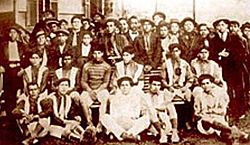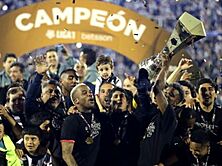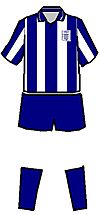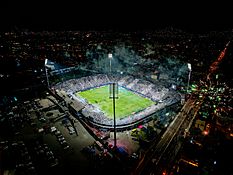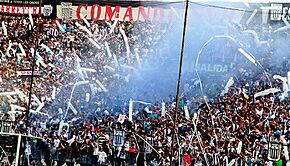Club Alianza Lima facts for kids
 |
|||
| Full name | Club Alianza Lima | ||
|---|---|---|---|
| Nickname(s) | El Equipo del Pueblo (The People's Team) Los íntimos de La Victoria (La Victoria's Members) Grones |
||
| Short name | Alianza | ||
| Founded | February 15, 1901 (as Sport Alianza) | ||
| Ground | Estadio Alejandro Villanueva | ||
| Capacity | 33,938 | ||
| Chairman | Fernando Cabada | ||
| Manager | |||
| League | Liga 1 | ||
| 2024 | Liga 1, 4th of 18 | ||
|
|
|||
Club Alianza Lima, often called Alianza Lima, is a professional sports club from Lima, Peru. It was started on February 15, 1901, by young people in the Chacaritas neighborhood. The club is famous for its successful football team in Peru.
Alianza Lima has won 25 league titles in the Peruvian Primera División. It is the oldest team still playing in this top competition. Many people consider Alianza Lima the most popular club in Peru. In April 2016, it had over 12 million fans.
The team plays its home games at the Estadio Alejandro Villanueva. This stadium is named after Alejandro Villanueva, a very important player for the club. People also call the stadium Matute, after the neighborhood where it is located. It can hold up to 33,938 fans.
Alianza Lima is one of Peru's most successful football clubs. They have won 59 official titles, including 25 league titles and many domestic cups. Their best international results were reaching the semi-finals of the Copa Libertadores in 1976 and 1978. In 1987, a sad event happened when the team's players and coaches died in an airplane crash.
Alianza Lima has a big rivalry with Universitario de Deportes. Their matches are known as the Peruvian Clásico. This is the oldest and biggest rivalry in Peru. Other rivals include Sporting Cristal, Deportivo Municipal, and Sport Boys.
The club also has other sports teams. These include a women's volleyball team, a women's football team, and teams for basketball, futsal, and Esports.
Contents
Club History
How Alianza Lima Started
The club began as Sport Alianza on February 15, 1901. It was founded by young people from the working class in Lima. The name "Alianza" came from the Alianza Racing Horse Stud, where the team played its first games. This stud was on Cotabambas street in Lima.
Alianza Lima is one of Peru's oldest professional football teams. It was a founding member of the Peruvian Football League, which started in 1912. The club's first uniform was green and white. This honored Eduardo Pedreschi, one of the founders, who had Italian family. Later, the team started using blue, white, and black colors, which were the colors of the Alianza stables. By the 1920s, the famous striped jersey became their main uniform. The club changed its name to Alianza Lima in 1920. The league became professional in 1951.
Alianza played in the amateur league from the start and won its first title in 1918. In its early years, the team played against other clubs from Lima and Callao. Their games against Atlético Chalaco from Callao were very exciting. These matches were the first "clasico" or derby for the club.
A Special Winning Streak
The Alianza Stud moved several times, so the team also had to move. In 1928, the club, now called Alianza Lima, settled in the La Victoria District. This area became a special home for the club and its fans.
In the same year, Alianza played against Federación Universitaria for the first time. This club later became Universitario de Deportes, Alianza's biggest rival. Their games are now the most important derby in Peru.
The 1930s were a mix of great joy and disappointment for the team. Alianza Lima won the National Championship four times in a row in 1931, 1932, 1933, and 1934. This was the first and only time a Peruvian team achieved this. However, the Peruvian Football Federation did not officially recognize the 1934 championship for Alianza. Instead, it was given to their rival, Universitario.
The memory of this four-in-a-row was also affected by the club being moved to a lower league in 1938. But after just one season, the team returned to the First Division.
Winning Titles and Cup Games
From the 1940s through the 1970s, Alianza Lima won 10 championships. They won two Peruvian titles in a row in 1977 and 1978. During this time, many Alianza players were also part of the Peru national football team. The team had its best international success in the 1976 and 1978 Copa Libertadores. They reached the semi-finals but lost both times.
After that, their Copa Libertadores campaigns were not as successful. In the 1990s, they reached the Round of 16 several times. They also made it to the semi-finals of the 1999 Copa Merconorte. In 2010, they had a great campaign, even beating the defending champions Estudiantes de la Plata 4–1 in Lima. However, they were eliminated in the Round of 16 after a controversial match against Universidad de Chile.
In the 2011 Copa Libertadores, Alianza Lima lost in the preliminary phase to Mexico's Jaguares de Chiapas. In the 2012 Copa Libertadores, they played in Group 5 against teams from Uruguay, Brazil, and Ecuador/Paraguay.
The 1980s and a Sad Event
The 1980s were a tough time for the club. Even with good players, Alianza could not win titles in the early part of the decade. Some titles were won by Sporting Cristal, which became another big club in Peru.
The 1987 Air Tragedy
In 1987, Alianza Lima was leading the league with only a few games left. On December 8, 1987, the team traveled to Pucallpa to play a league match against Deportivo Pucallpa. Alianza won the game 1–0. On their way back, the team was on a Peruvian Navy plane, a Fokker F27. The plane crashed into the sea near the Lima-Callao Airport. Sadly, all the players and coaching staff died. Only the pilot survived.
Alianza finished the championship with young players from their youth team. Some players from the Chilean club Colo-Colo also joined to help. This created a strong friendship between the two clubs. Alianza could not keep its first-place position, and their rival, Universitario de Deportes, won the title that year.
The team had to rebuild from the beginning. Even former players who had retired, like Teófilo Cubillas, or those about to retire, like César Cueto, came back to help the club during this difficult time.
Alianza Lima almost moved to a lower league in 1988, but they managed to stay in the First Division. In the years that followed, they were competitive but did not win any titles.
New Titles and the Club's 100th Birthday
In 1997, Alianza Lima won its first title in 18 years, led by Colombian manager Jorge Luis Pinto. In 1999, they finished second after losing to Universitario in the finals. In early 2000, another sad event occurred when young captain Sandro Baylón died in a car accident.
In 2001, the club celebrated its 100th birthday and won the national title. They beat Cienciano in Cusco in a penalty shootout. Alianza Lima then won the championships in 2003 and 2004, defeating Sporting Cristal in both finals. These wins were under Argentinian manager Gustavo Costas. In 2006, Alianza Lima won the championship again, beating Cienciano del Cusco in the final. This allowed them to play in the Copa Libertadores.
In 2017, Alianza Lima won its first championship in over ten years. They won both the Apertura and Clausura tournaments, so they did not need to play in final playoffs. Alianza Lima and Sporting Cristal have been the most successful Peruvian clubs in this century, each winning five championships.
At the end of 2020, Alianza was moved to the second division. This happened even though all games that year were played in Lima and Callao due to the COVID-19 pandemic. After the season, Alianza tried to stay in the first division. There was a disagreement about another team, Carlos Stein, which had finished one place above Alianza. The Peruvian Football Association fined Carlos Stein. Alianza argued that Carlos Stein should have lost points, which would have kept Alianza in the first division. The Peruvian Football Association disagreed. Alianza then took their case to the International Court of Arbitration for Sport (CAS) in Switzerland. CAS decided in favor of Alianza, and the team returned to the first division. Carlos Stein was moved to the second division, even though the new 2021 season had already started.
The 2021 season ended with Alianza Lima playing Sporting Cristal in a two-game final. Alianza won the first game 1-0 and tied the second 0–0, becoming the champions for 2021. Carlos Stein, meanwhile, won a penalty shootout in the second division playoffs and returned to the first division for 2022.
In 2022, Alianza Lima finished fourth in the Torneo Apertura and first in the Torneo Clausura. They received a direct pass to the championship playoffs final. Melgar beat Sporting Cristal 4–0 over two games to face Alianza Lima for the 2022 Liga 1 title. Alianza lost the first game 1-0 in Melgar's stadium. In the second game, Yordi Vílchez scored to tie the series. Pablo Lavandeira then scored another goal, giving Alianza a 2-1 lead. They held on to win back-to-back league titles for the first time since 2003 and 2004. This was Alianza Lima's 25th league title according to official records, though the club believes it was their 26th. It was also their seventh title since 2000, matching Sporting Cristal's record. In 2023, Alianza lost the final to their rivals Universitario de Deportes 3–1.
Team Uniform and Badge
|
|
| The kit used during October in honor of the club's patron saint |
The team's home uniform has a shirt with navy blue and white vertical stripes, navy blue shorts, and navy blue socks. Their away uniforms change often and can be blue, white, or green.
Every October, the team changes its colors to purple and white. This is a special tribute to the Lord of Miracles, who is a patron saint for the team. The color purple is linked to this religious tradition. Alianza Lima is the only team in the world that changes its uniform colors for a religious reason.
|
|
|
|
|
|
|
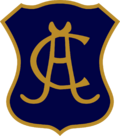 |
 |
 |
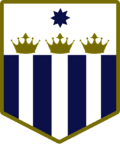 |
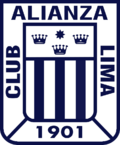 |
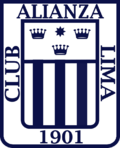 |
 |
| 1912 | 1920 | 1925 | 1927 | 1970-1987 | 1988-2010 | 2011–present |
Home Stadium
Alianza Lima plays its home games at the Estadio Alejandro Villanueva. It is also known as Matute because it is in that neighborhood. The club announced the stadium's construction on February 15, 1951, which was its 50th anniversary. The land for the stadium was given by Manuel Odría, who was the President of Peru at the time.
Building the stadium faced delays due to money problems. Construction finally began on May 30, 1969. Uruguayan architect Walter Lavalleja designed the project. The stadium opened on December 27, 1974, with a match between Alianza and Nacional from Uruguay. About 36,966 fans watched the game, which ended in a 2–2 tie.
On December 4, 2010, the stadium became the first in Peru to have a large LED screen. It also had a digital advertising banner.
A survey by the University of Lima found that the Estadio Alejandro Villanueva was considered the least safe stadium in Peru for football. This is partly because it is in a busy neighborhood in Lima. To improve safety, since 2016, the stadium has a video-monitoring center. It is equipped with 50 high-tech security cameras in different areas, including the stands and inside and outside the stadium.
Noche Blanquiazul
The Noche Blanquiazul (White and Blue Night) is an annual event. It is where Alianza Lima introduces its professional football squad for the new season.
The event usually starts with music, often traditional Peruvian or salsa. Then, the club's new players are introduced to the fans. After that, there is a friendly match against a guest team from another country. This match is usually held at the Alejandro Villanueva Stadium. The first Noche Blanquiazul was held in 1995.
Supporters
Alianza Lima has the largest number of supporters in Peru. Their main fan group, known as a "Barra Brava" or Ultras, is called the Comando Svr. The "V" is used instead of a "U" to avoid the first letter of their rivals, Universitario. Alianza Lima fans are known for their big celebrations and strong loyalty. Historically, Alianza was seen as the club of the working class, while Universitario was linked to the upper class. This difference helped create their intense rivalry.
Surveys in 2001, 2002, and 2003 showed that Alianza Lima had the most fans in Peru. In 2001, 42% of football fans supported Alianza Lima, followed by Universitario with 35%. In 2002, Alianza had 43% and Universitario 37%. By 2003, Alianza's support grew to almost 50%, compared to 31% for Universitario. Alianza was the most popular club among different income groups, especially in lower-income areas.
In 2014, a study by "Euromericas Sport Marketing" ranked Alianza Lima as the most popular football team in South America. It was also the second most popular in Latin America. The study suggested that Alianza fans' loyalty is very strong, even more so than big teams like Boca Juniors in Argentina or Corinthians in Brazil.
A famous Alianza fan is Pope Leo XIV, who started supporting the team when he lived in Peru.
Club Rivalries
The rivalry between Universitario and Alianza Lima is called the Peruvian Clásico. It is the biggest football rivalry in Peru and one of the largest in South America. The first match between these two teams happened in 1928. Alianza Lima was expected to win, but Universitario won the game. Matches between the two teams are very intense. Alianza Lima has beaten Universitario 140 times, lost 122 times, and drawn 103 times.
Over the years, these matches have seen many arguments and players being sent off. This has made the rivalry even stronger. Alianza has scored more goals against their rival, with a total of 487 goals.
Alianza also has a long-standing rivalry with Sporting Cristal. Since their first match in 1956, they have played 197 times. Alianza has won 70 matches, and Sporting Cristal has won 59. There have been 68 draws, and Alianza Lima has scored 251 goals in these games. Alianza Lima also has rivalries with Deportivo Municipal and Sport Boys.
Players
Current Team Squad
|
|
Players on Loan
|
|
World Cup Players
These players were part of their country's team at the FIFA World Cup while playing for Alianza Lima:
 Domingo García (1930)
Domingo García (1930) José María Lavalle (1930)
José María Lavalle (1930) Demetrio Neyra (1930)
Demetrio Neyra (1930) Julio Quintana (1930)
Julio Quintana (1930) Jorge Sarmiento (1930)
Jorge Sarmiento (1930) Alberto Soria (1930)
Alberto Soria (1930) Juan Valdivieso (1930)
Juan Valdivieso (1930) Alejandro Villanueva (1930)
Alejandro Villanueva (1930) Julio Baylón (1978)
Julio Baylón (1978) Teofilo Cubillas (1970, 1978)
Teofilo Cubillas (1970, 1978) Javier González (1970)
Javier González (1970) Pedro Pablo León (1970)
Pedro Pablo León (1970) Juan Cáceres (1978)
Juan Cáceres (1978) César Cueto (1978)
César Cueto (1978) Jaime Duarte (1978, 1982)
Jaime Duarte (1978, 1982) Guillermo La Rosa (1978)
Guillermo La Rosa (1978) Roberto Rojas (1978)
Roberto Rojas (1978) Hugo Sotil (1978)
Hugo Sotil (1978) José Manuel Velásquez (1978)
José Manuel Velásquez (1978) José González Ganoza (1982)
José González Ganoza (1982) Jorge Olaechea (1982)
Jorge Olaechea (1982) Salvador Salguero (1982)
Salvador Salguero (1982) Miguel Araujo (2018)
Miguel Araujo (2018)
Club Records
- Félix Suárez scored the fastest goal ever in a Copa Libertadores match. It happened just 6 seconds into the game in 1976. Alianza Lima won that match 3–0.
- Juan Valdivieso, a famous Alianza Lima goalkeeper, once played as a forward in a game and scored 7 goals!
- Alianza Lima holds the record for the biggest win in Peruvian football history. They defeated Sport Pilsen 11–0 in 1984.
- Alianza Lima is the oldest club in the Peruvian First Division, having played in it for 103 seasons.
Top Goal Scorers
| # | Name | Goals | Games | Years |
|---|---|---|---|---|
| 1 | 178 | 349 | 1992–1999, 2001–2005, 2008 | |
| 2 | 165 | 327 | 1966–1972, 1977–1978, 1984, 1988 | |
| 3 | 128 | 369 | 1958–1974, 1977–1978 | |
| 4 | 104 | 227 | 1960–1970, 1973 | |
| 5 | 102 | 127 | 1948–1956 | |
| 6 | 101 | 262 | 1976–1983 | |
| 7 | 92 | 379 | 2001–2006, 2008–2011, 2013–2014, 2021–2022 | |
| 8 | 85 | 370 | 1977–1988 | |
| 9 | 77 | 149 | 1971–1977 | |
| 10 | 71 | 99 | 1927–1943 |
Most Games Played
| # | Name | Games | Goals | Years |
|---|---|---|---|---|
| 1 | 524 | 22 | 1990–1998, 2002–2008, 2009–2012 | |
| 2 | 509 | 0 | 1969–1987 | |
| 3 | 405 | 8 | 1973–1985 | |
| 4 | 386 | 14 | 1988–2001 | |
| 5 | 379 | 92 | 2001–2006, 2008–2011, 2013–2014, 2021–2022 | |
| 6 | 371 | 57 | 1998–2003, 2008–2013 | |
| 7 | 370 | 85 | 1977–1988 | |
| 8 | 369 | 128 | 1958–1974, 1977–1978 | |
| 9 | 349 | 178 | 1992–1999, 2001–2005, 2008 | |
| 10 | 327 | 165 | 1966–1972, 1977–1978, 1984, 1988 |
Managers
Managers Who Won Titles
| Manager | Years | Titles |
|---|---|---|
| 1928–34 | 1928, 1931, 1932, 1933 | |
| 1946–48 1954–56 |
1948, 1954, 1955 | |
| 1952–53 | 1952 | |
| 1961–66 | 1962, 1963, 1965 | |
| 1975–76, 1987 | 1975 | |
| 1972, 1976 | 1976 Copa Simón Bolívar (FVF) | |
| 1977–78 | 1977, 1978 | |
| 1997–98, 1999–00 | 1997 | |
| 2001 | 2001 | |
| 2003–04 2009–11 |
2003, 2004 | |
| 2006–07 | 2006 | |
| 2014–15 | 2014 Torneo del Inca | |
| 2017–18 2019–20 |
2017, 2018 Supercopa Movistar | |
| 2021–22 | 2021 | |
| 2022–23 | 2022 |
Club Honours
Major Titles
- Keys
- Record
- (s) Shared record
| Type | Competition | Titles | Runner-up | Winning years | Runner-up years |
|---|---|---|---|---|---|
| National (League) |
Primera División | 25 | 25 | 1918, 1919, 1927, 1928, 1931, 1932, 1933, 1948, 1952, 1954, 1955, 1962, 1963, 1965, 1975, 1977, 1978, 1997, 2001, 2003, 2004, 2006, 2017, 2021, 2022 | 1914, 1917, 1926, 1930, 1935, 1937, 1943, 1953, 1956, 1961, 1964, 1971, 1982, 1986, 1987, 1993, 1994, 1996, 1999, 2009, 2011, 2018, 2019, 2023 |
| Half-year / Short Tournament (League) |
Torneo Apertura | 6 | 5 |
1997, 2001, 2004, 2006, 2017, 2023
|
1999, 2002, 2003, 2018, 2025 |
| Torneo Clausura | 7 | 5 |
1997, 1999, 2003, 2017, 2019, 2021, 2022
|
1998, 2002, 2014, 2018, 2024 | |
| Liguilla Pre-Libertadores | 3 | — |
1993, 1994, 1996
|
— | |
| Torneo Descentralizado | 2 | — |
1986, 1987
|
— | |
| Torneo Regional | — | 2 | — | 1986, 1990–II | |
| Torneo Descentralizado "B" | 1 | — |
1988
|
— | |
| Torneo Regional – Región Metropolitana | 3 | 3 |
1985, 1989–I, 1990–II
|
1984, 1986, 1990–I | |
| Torneo Interzonal | 1(s) | — |
1977
|
— | |
| Torneo de Primeros Equipos | 3 | 1 |
1931, 1932, 1933
|
1934 | |
| Campeonato de Apertura (ANA) | 6 | 3 |
1947, 1949, 1950, 1955, 1956, 1963
|
1954, 1959, 1969 | |
| National (Cups) |
Torneo del Inca | 1(s) | 1 |
2014
|
2015 |
| Torneo Interligas | 1 | — |
1928
|
— | |
| Copa de Campeones del Perú | 1 | — |
1919
|
— | |
| Regional (League) |
Liga Provincial de Lima | 1 | — | 1939 | — |
| International (Cups) |
Copa Simón Bolívar (FVF) | 1(s) | — |
1976
|
— |
Friendly Competitions
| Type | Competition | Titles | Runner-up | Winning years | Runner-up years |
|---|---|---|---|---|---|
| National (Cup) |
Supercopa Movistar | 1 | — |
2018
|
— |
| Cuadrangular de Verano | 1 | — |
1990
|
— | |
| Torneo Extraoficial | — | 1 | — |
1936
|
|
| International (Cup) |
Noche Blanquiazul | 12(s) | 8 | 1995, 1996, 2002, 2013, 2014, 2015, 2016, 2019, 2022, 2023, 2024-I, 2025 | 2001, 2008, 2009, 2010, 2017, 2018, 2020, 2024-II |
| Copa El Gráfico-Perú | 2(s) | 1 | 1999, 2003 | 2002–I | |
| Copa Ciudad de Rosario | 1 | — | 2011 | — | |
| Copa EuroAmericana | 1 | — | 2014–IV | — | |
| Marlboro Cup | — | 1 | — | 1990 |
Youth Titles
| Type | Competition | Titles | Runner-up | Winning years | Runner-up years |
|---|---|---|---|---|---|
| National (League) |
Torneo de Promoción y Reserva | 2 | 2 | 2011, 2022 | 2013, 2018 |
| Torneo Equipos de Reserva | 2 | 2 | 1934, 1948 | 1930, 1932 | |
| Half-year / Short tournament (League) |
Copa Generación Sub-18 | — | 1 | — | 2021 |
| Torneo Clausura | — | 1 | — | 2018 |
Performance in CONMEBOL Competitions
- Copa Libertadores: 31 appearances
- 1963, 1964, 1966, 1972, 1976, 1978, 1979, 1983, 1987, 1988, 1994, 1995, 1997, 1998, 2000, 2002, 2003, 2004, 2005, 2007, 2010, 2011, 2012, 2015, 2018, 2019, 2020, 2022, 2023, 2024, 2025
- Semi-finals (2): 1976, 1978
- Copa Sudamericana: 5 appearances
-
- 2002: Quarter-finals
- 2003: Preliminary Round
- 2014: First Stage
- 2017: First Stage
- 2025: TBD
- Copa CONMEBOL: 1 appearance
-
- 1996: First round
- Copa Merconorte: 4 appearances
-
- 1998: Group Stage
- 1999: Semi-finals
- 2000: Group Stage
- 2001: Group Stage
- U-20 Copa Libertadores: 3 appearances
-
- 2011: Fourth Place
- 2012: Quarter-finals
- 2023: Group Stage
Other Sports at Alianza Lima
Women's Football
The Alianza Lima women's football team plays in the Liga Femenina. This is the top women's football league in Peru. They have won the championship three times: in 2021, 2022, and 2024. They finished second in the 2023 season. Alianza Lima has not yet won an international competition like the Copa Libertadores Femenina. Their best results in that competition were reaching the quarter-finals in 2022 and 2024.
Women's Volleyball
Alianza Lima also has a women's volleyball team. They play in the Liga Nacional Superior de Voleibol, which is the highest level of women's volleyball in Peru. They won their first title in the 2023–24 season, after being runners-up in the three seasons before that. They also won the División Superior de Vóley, an older top division, three times. In 1994, Alianza Lima was the runner-up in the Campeonato Sudamericano de Campeones.
Basketball
The Alianza Lima basketball team plays in the Liga Nacional de Basketball. The women's team won the Liga de Basket de Lima in 1980, which is their only title.
| Type | Competition | Titles | Runner-up | Winning years | Runner-up years |
|---|---|---|---|---|---|
| National (League) |
Campeonato Metropolitano de Baloncesto | 1 | — | 1980 | — |
| International (Cups) |
Campeonato Sudamericano de Clubes Campeones de Básquetbol | 1 | — | 1981 Rueda Consuelo | — |
Futsal Down
The Alianza Lima futsal team plays in the Liga de Futsal de Perú. This team was started on August 16, 2022. They became national champions in 2023. In the same year, the team also won the Copa Latinoamericana Inclusiva.
E-sports
Alianza Lima has an E-sports football team. They play in the Liga Peruana de eFootball. This team won the national league in 2021.
See also
 In Spanish: Club Alianza Lima para niños
In Spanish: Club Alianza Lima para niños


